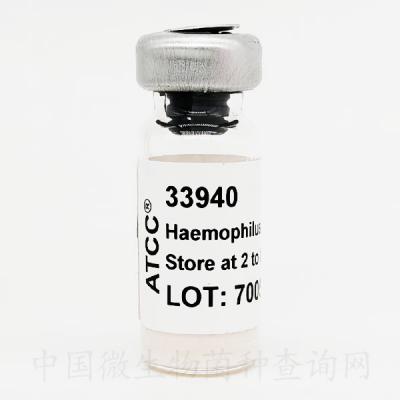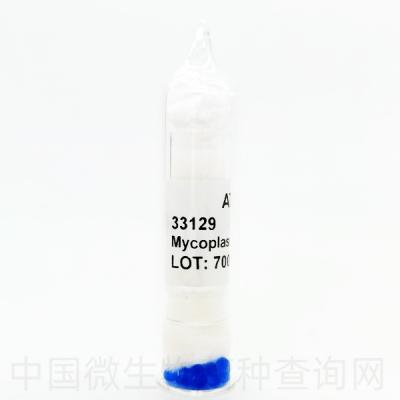ATCC® Number:30010™
Organism: Acanthamoeba castellanii (Douglas) Page
Designations: Neff
Isolation: soil, Pacific Grove, CA, 1957
Depositors: RJ Neff
Biosafety Level:1
Shipped: frozen
Growth Conditions: ATCCmedium 354: Acanthamoeba mediumATCCmedium 712: PYGTemperature: 25.0°C Duration: axenic Protocol: ATCCNO: 30010 SPEC: This strain is distributed as a frozen stabilate. See general instructions for thawing and storage of frozen material before proceeding. As soon as the shipment arrives, remove the frozen ampule from the dry ice and transfer it directly to a 35C water bath. After thawing the ampule, transfer the contents to a 16 x 125 mm plastic screw-capped test tube containing 5 ml of fresh medium. (Glass test tubes may also be used, but the cultures can be transferred less frequently when maintained in plastic.) Screw the cap on tightly and incubate the tube on a 5-15 degree slant at the appropriate temperature. Subculture every 2-4 weeks by vigorously agitating the culture and aseptically transferring a 0.1 ml aliquot to a fresh tube of medium. Prolongation of the transfer interval can be extended up to 6 months for certain strains of Acanthamoeba, however, this must be determined empirically for each strain.
Permits/Forms: In addition to the MTA mentioned above, other ATCC and/or regulatory permits may be required for the transfer of this ATCC material. Anyone purchasing ATCC material is ultimately responsible for obtaining the permits. Please click here for information regarding the specific requirements for shipment to your location.
Applications: control strain [92352]
Comments: Very similar to A. terricola ATCC30134 on the basis of starch gel electrophoretic analysis of enzymes. Two genetic markers that distinguish pathogenic and nonpathogenic strains [31825] resistant to complement lysis [34528] Editing of tRNAs [4911] [23807] Nucleotide sequences of 5S and 5.8S RNAs [4897] Isoenzyme electrophoresis [4949] Axenic cultivation [4686] Oxidative metabolism associated with phagocytosis [4810] Biochemical and molecular characterization [21721] characterization of Acanthamoeba polyphaga [4673] inhibition by Pseudomonas aeruginosa [23945] quantitative bacterial plaque assay for enumeration [24095] Chlorhexidine tablet system for disinfection [24158] Interaction of Legionella pneumophila [24180] Internalisation of bacterial substrate as factors in growth rate [24181] Production of monoclonal antibodies [24191] Occurrence in natural thermal waters in Mexico [24198] review [23576] phylogeny [24028] ATCCNO: 30010 SPEC: This strain is distributed as a freeze-dried preparation. See the general procedures for opening a freeze-dried vial. Aseptically add 0.5 ml of ice cold medium containing 12% (w/v) sucrose to the freeze-dried inner shell vial. Once the culture is completely rehydrated, aseptically add 1 ml of ATCCmedium 712 and distribute to a 16 X 125 mm plastic screw-capped test tube or a T-25 tissue culture flask containing 5.0 ml of the same medium. Incubate the test tube culture horizontally with the cap on tight. Trophozoites should be evident in 1-5 days.
Related Items: purified DNA: ATCC30010D
Cross References: Nucleotide (GenBank) : L20506 Acanthamoeba castellanii transfer RNA-Gln, complete tRNA; transfer RNA-Lys, complete tRNA; transfer RNA-Glu, complete tRNA; transfer RNA-Ile, complete tRNA; transfer RNA-Leu, complete tRNA.Nucleotide (GenBank) : M97651 Acanthamoeba castellanii mitochondrial Met-tRNA, Ala-tRNA, Pro-tRNA, and Asp-tRNA genes.Nucleotide (GenBank) : U03732 Acanthamoeba castellanii Neff mitochondrion rRNA large subunit gene.Nucleotide (GenBank) : K00471 A.castellanii (amoeba) 5.8S ribosomal RNA.Nucleotide (GenBank) : U12386 Acanthamoeba castellanii mitochondrion, complete genome.
Classification: KINGDOM: Protozoa






